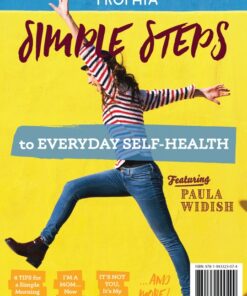A common argument for not eating healthy, nutrient-dense food is the fact that it’s too expensive. And it’s true—the price you pay at your local market is often double (or more) for the healthier organic versions of your favorite foods. But these immediate savings come with a hefty future price tag that you don’t see as you wander the aisles.
Wouldn’t it be grand if the nutrition content of organic baby spinach were listed right next to the price per pound? Or maybe even the number of healthy years you’d add to your life if you put this item in your cart on a regular basis? What is it costing you—in immediate dollars and cents, as well as future trips to the doctor and pharmacy—to skip the produce section altogether and head for those middle aisles filled with boxes and cans of convenience foods?
You can find the answer easily on your self-health education adventure. Knowledge is power. Right? And the only thing it’ll cost you is a little bit of time and energy. Lucky for you, once you start making the nutrition choices that your body truly needs, you’ll have more of both.
What epidemic do we hear about on an almost daily basis here in the United States? (If you guessed bubonic plague, you’re incorrect—not to mention a little out of touch.) If obesity was your answer, you’ve been paying attention. Kudos to you. Obesity is often referred to as a lifestyle disease, and it can make us more susceptible to other lifestyle diseases such as type 2 diabetes or heart disease.
Don’t worry, I’m not here to reiterate the causes and effects of obesity. Rather, I want to look at the dollars and cents our lifestyle choices cost us day in and day out—both immediately and overall. In other words, if you’re able to put your immediate grocery bills into perspective, you’ll benefit immensely from the overall costs you pay over your lifetime.
It’s true that a healthy lifestyle that consists of making good-for-you food choices at the market comes with a slightly higher grocery bill. But the actual amount may surprise you. According to Medical News Today, a healthy diet will cost you $550 more per year. Did you read that closely? That’s per year, not per month. This factoid translates into a figure that’s just shy of $1.51 per day. Can you think of a way to come up with an extra $1.51 a day? Maybe giving up, or even just cutting back, on a vice you have? Most of us have one, myself included. Since our vices don’t typically include things like eating too many green smoothies, kicking one can help you come up with that extra $1.51 per day and improve your health.
So what do the numbers look like for obesity? What are the dollars and cents associated with this lifestyle? A report from The George Washington University School of Public Health and Health Services titled “A Heavy Burden: The Individual Costs of Being Overweight and Obese in the United States” breaks it down to an annual cost of $524 for women and $432 for men.
If your immediate thought is that it’s cheaper to be obese, you’d be wrong. These costs don’t take into account other expenses like increased insurance premiums or even the grocery bill. They mostly take into account medical expenses associated with obesity. Considering the fact that obesity can also reduce your life expectancy, it has other costs that you can’t put a price tag on.
Taking a look at other diseases that often stem from obesity, the dollars and cents just keep adding up:
- Type 2 diabetes has an annual expense of $1,700 for men and $2,100 for women—and that’s without even taking into account any of the common complications associated with it.
- According to a study of more than 12,000 people, the mean cost of cardiovascular disease is $18,953. It’s even higher if the individual also has diabetes.
And keep in mind that people of all sizes who primarily eat cheap, processed foods increase their risk of disease. Kinda makes that $1.51 per day seem workable, eh?
I’m not downplaying the hard work and commitment that making these lifestyle changes require. The good news is our bodies are amazing machines that are swift to respond to the positive changes we make, so you’ll see the fruits of your labor quickly. Give up soda one week. Buy organic spinach the next. Small change by small change, you can work your way toward optimal health.
SRP is there to help, as always. Check out these articles from the SRP Historical Archives.
How to Prevent Heart Attacks by Benjamin P. Sandler, MD. The author discusses the role of dysfunctional blood-sugar regulation in causing heart attacks.
124 Ways Sugar Ruins Your Health by Nancy Appleton, PhD. From raising our triglycerides to weakening our eyesight, Appleton details what sugar does to the human body.
The Battlefront for Better Nutrition by Dr. Royal Lee. Learn the truth about processed foods and what effect they have on our lives.
 Get self-health education, nutrition resources, and a FREE copy of A Terrible Ten: Health Foods That Ain't ebook.
Get self-health education, nutrition resources, and a FREE copy of A Terrible Ten: Health Foods That Ain't ebook.

